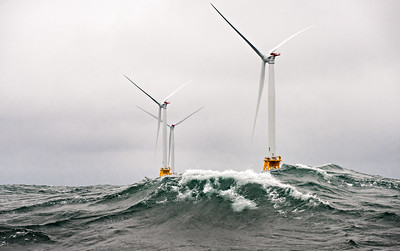States are gearing up to produce electricity using off-shore wind farms. Last fall, New Jersey announced that it would invest about one-half billion dollars in the construction of an offshore wind power transmission facility. The state will also invest an additional $568 million in on-shore upgrades to support the off-shore facility. This will be the first such facility in the United States. By 2035, the state plans to generate 7.5 gigawatts (GW) of electricity from off-shore wind facilities, and 11 GW by 2040.
Arizona and New Mexico have permitted an on-shore wind farm that will generate 3.5 GW of electricity when complete. The operator, Pattern Energy Group, kicked off construction of the project in April. This will be the largest on-shore wind generation facility in the Western Hemisphere.
In January, Duke Energy brought a 200 megawatt (MW) wind power operation online in Iowa. Verizon has entered into a 15 year power purchase agreement to buy 87% of the wind power the facility generates. The facility could generate enough electricity to power more than 45,000 homes.
In March, an energy company in New York announced plans to construct two wind farms in New York Harbor. The facilities will generate 1.4 GW of electricity when complete. One facility will operate on Staten Island. The other will operate in Queens.
If it seems like there’s a lot of interest in wind power, there is. Although solar energy has gotten a lot of attention, it generates only a small fraction of the energy that northern states need. Wind power is much more reliable, more consistent, and easier to harvest than solar energy, particularly during the winter months.
The wind power industry needs training facilities
According to the US Department of Energy, wind generates about 8% of Michigan’s electricity right now. That number will increase. Among Michigan’s community colleges, students can find wind power programs at Delta College, Henry Ford Community College, Kalamazoo Valley Community College, Kellogg Community College, Lansing Community College, Macomb Community College, Monroe County Community College, Muskegon Community College, and St. Clair County Community College.
These community colleges have already taken the initiative to respond to the growing need for a wind power workforce. Graduates from these programs will find a wide-open job market, both in Michigan and throughout the United States. They’ll also find living wage jobs and room for advancement.
The Department of Energy has funded more than $15M in research to determine everything from the best places to site off-shore wind generation platforms to the impact of ice and waves on energy platforms to the impact of off shore wind farms on migratory bats. Wind power generation is coming to Michigan. WCC can be part of this new industry.
Or not.
Photo Credit: National Renewable Energy Lab , via Flickr



















